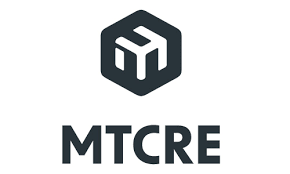Foundations of the MTCRE (MikroTik Certified Routing Engineer)
Last updated on

Topics Covered
- What is the MTCRE?
- How does the MTCRE differ from the MTCNA?
- Benefits of getting an MTCRE and what can I do with it?
- Course orientation & exam format
- EVE-NG installation & setup
- Adding MikroTik CHR images
- Building base lab topology (3 routers + 2 PCs)
- CHR basics: access, licensing, first configs
Module 1 – Static Routing
Module 2 – Point-to-Point Addressing
- Point-to-point addressing using /30 and /31
- Benefits of efficient IP allocation
- Labs: configure /30 vs /31 inter-router addressing, test routing
Module 3 – VPNs & VLANs
- VPN overview (site-to-site vs remote access)
- Tunnel protocols: IPIP, GRE, EoIP, L2TP, PPTP, SSTP, PPPoE
- Running routing protocols over tunnels (OSPF over GRE/IPIP)
- VLAN theory (802.1Q tagging, trunk vs access)
- QinQ (802.1ad VLAN stacking)
- VLAN configuration:
- RouterOS bridge VLAN filtering
- Switch-chip VLANs (hardware offload, if supported)
- Labs:
- Site-to-site IPIP tunnel with static routes
- GRE tunnel running OSPF
- EoIP bridging two LANs (DHCP broadcast test)
- VLAN trunk with multiple access ports
- QinQ to simulate ISP delivering customer VLANs
Module 4 – OSPF (Open Shortest Path First)
- OSPF fundamentals: Hello, LSAs, neighbor states
- OSPF network types (broadcast, NBMA, P2P)
- DR/BDR elections
- Areas & router types: backbone, ABR, ASBR
- Multi-area OSPF design
- Stub & NSSA areas, totally stubby
- External route distribution: LSAs
- OSPF costs & interface types
- Route summarization with area ranges
- Virtual links (when & how to use)
- Route filtering (prefix-lists, in/out filters)
- OSPF over tunnels
- OSPF with multicast & NBMA challenges
- Labs:
- Single-area OSPF across 4 routers
- Multi-area OSPF with ABR
- Stub & NSSA areas with default route injection
- DR/BDR election on broadcast segment
- Redistribute static routes into OSPF
- Apply prefix filtering & summarization
- Virtual link to connect discontiguous areas
Module 5 – Redundancy & Load Balancing
- ECMP revisited (multi-link redundancy)
- Recursive routing with failover (ISP availability check)
- Backup routes with higher administrative distance
- VRRP (Virtual Router Redundancy Protocol) for LAN gateway resilience
- Labs:
- ECMP load balancing across 2 ISPs
- Recursive failover using public reachability target (e.g., 8.8.8.8)
- VRRP master/backup failover test on LAN gateway
Module 6 – Final Integrated Lab (Mock Exam)
- Build full scenario with:
- Two ISPs
- Recursive static routes + failover
- ECMP load balancing
- Point-to-point addressing
- VLAN trunk with QinQ
- GRE/IPIP tunnels carrying OSPF
- Multi-area OSPF (stub, NSSA, summarization, redistribution)
- VRRP for LAN redundancy
- Troubleshoot missing OSPF neighbors, failover routes, VLAN misconfigurations
- Verify end-to-end connectivity between all LANs

